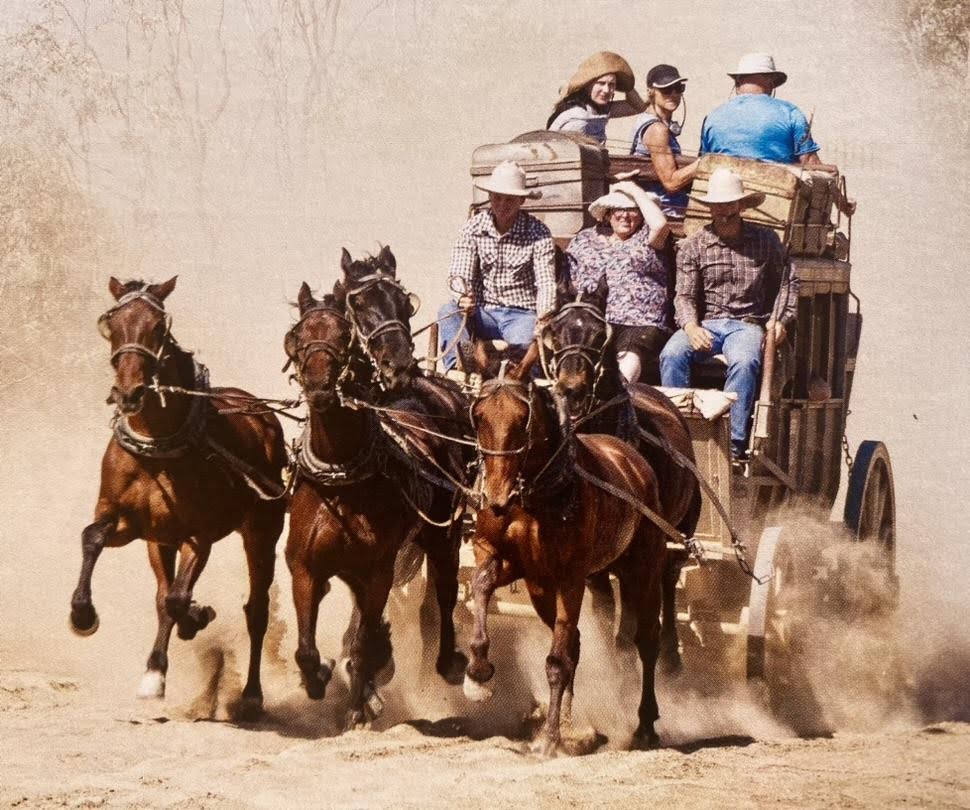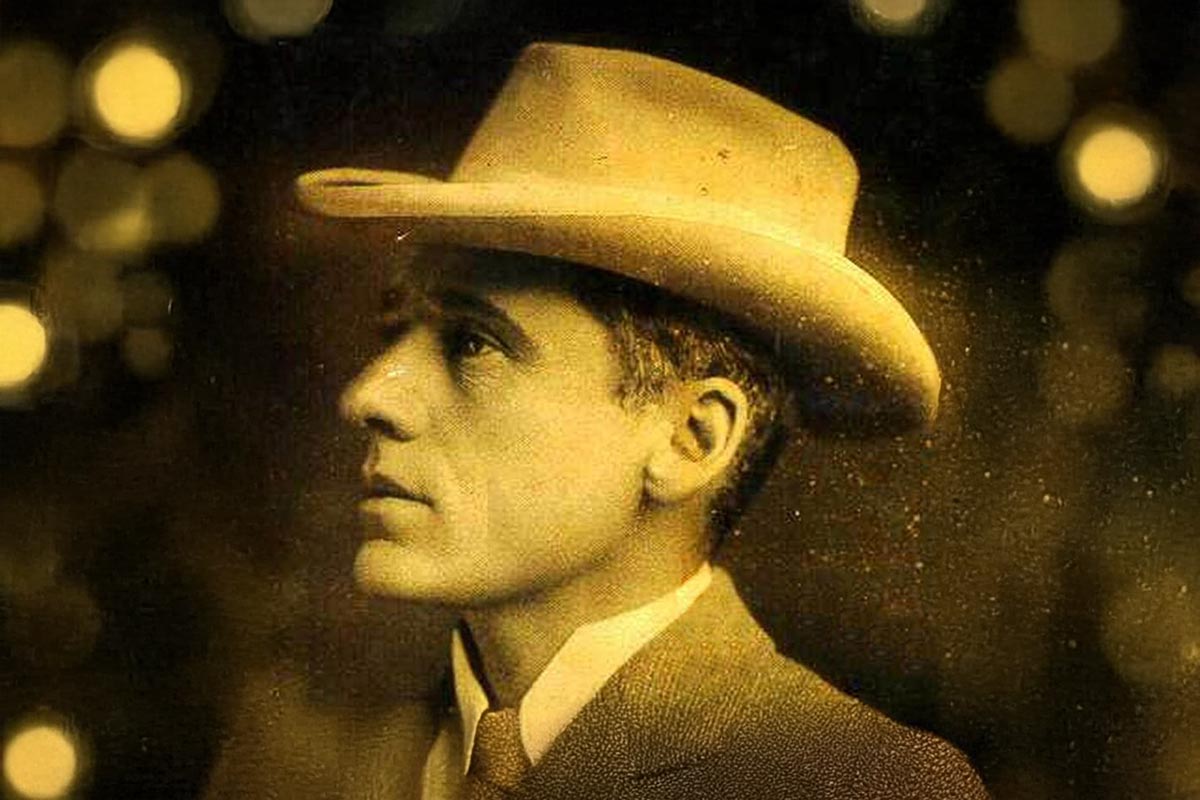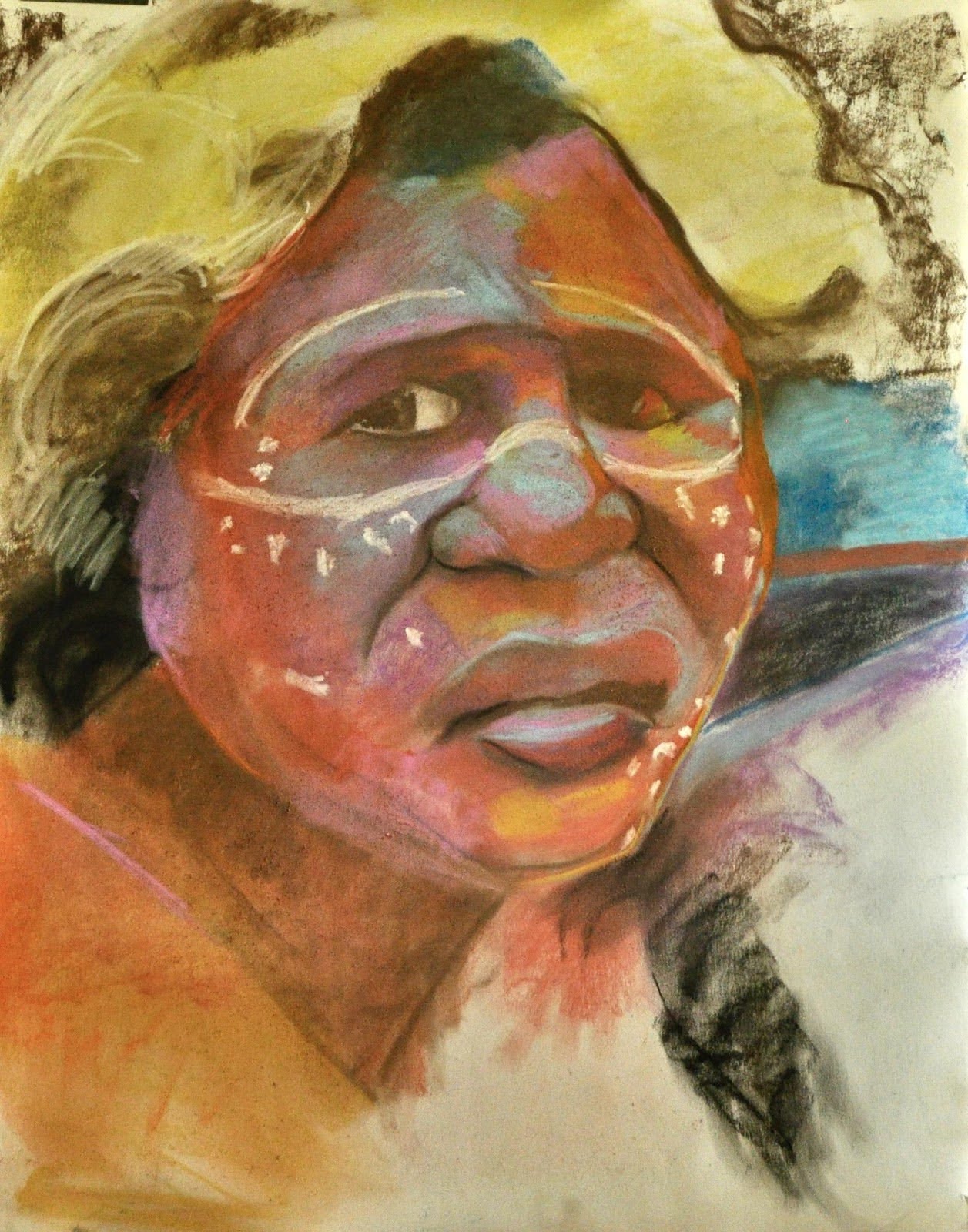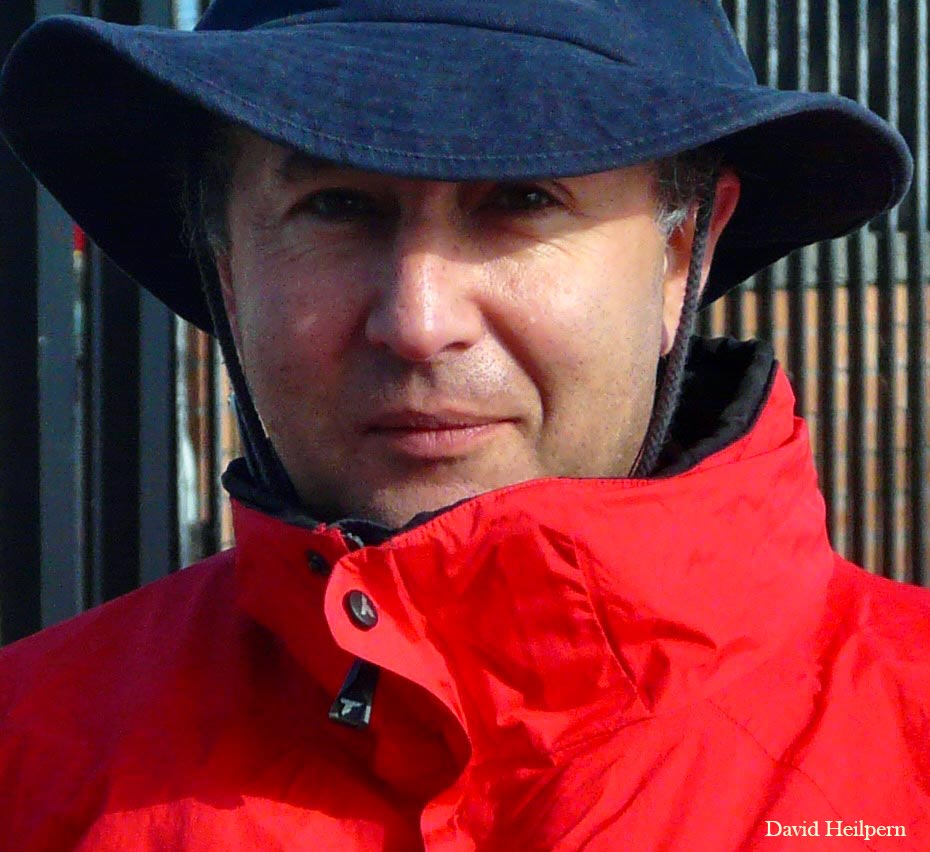
From schooldays, we all recall that the very foundation of our Western culture is ancient Athens, a pinnacle of cultural achievement, pre-eminent in all the arts and sciences, including astronomy, medicine, architecture, sculpture, literature, music, statecraft and warfare, and inventing, history, theatre, philosophy, and democracy. Particularly since the eighteenth-century Classical Revival it inspired the West. Most, however, will be shocked to learn that that high culture of classical Athens was a drug culture, steeped in the use of hallucinogens, psychedelics, or entheogens.
The word, entheogens, coined in 1979 by a group of ethnobotanists and scholars of mythology, derives from two words of ancient Greek: ἔνθεος, pronounced entheos, meaning god within, or full of god, is the root also of enthusiasm. The final part, γενέσθαι, pronounced genesthai, means becoming, hence ‘becoming god within’. So, entheogen means literally, “that which causes God to be within an individual.”
Every autumn, for thousands of years, tens of thousands from throughout the known world flocked to Eleusis, nineteen kilometres north-west of Athens, for a harvest festival celebrating the ancient religious Mysteries, culminating in sharing a psychedelic potion. From all social classes, they included Socrates, Cicero, and Roman emperors, Augustus, Hadrian, and Marcus Aurelius, who made the journey to Eleusis, becoming initiates, life-changing for them too.
These Eleusinian Mysteries were the most famous and most important of many other religious Mysteries of the time. Called Mysteries because of their secrecy, with any breach punishable by death, they were conservative religions, emerging from prehistoric tribal shamanism of hunter-gatherers and pastoral nomads, then through agrarian cults, into urban commercial cultures.
In the mists of prehistory, the Mysteries were evolving from pre-hominid use of entheogens, encountered as our vegetarian ape ancestors, descending from the trees, to explore new ecological niches, tasted every possible food or medicine along their way. Becoming hunters, following game across the savannahs, they tasted psilocybin mushrooms growing on the dung of their prey.
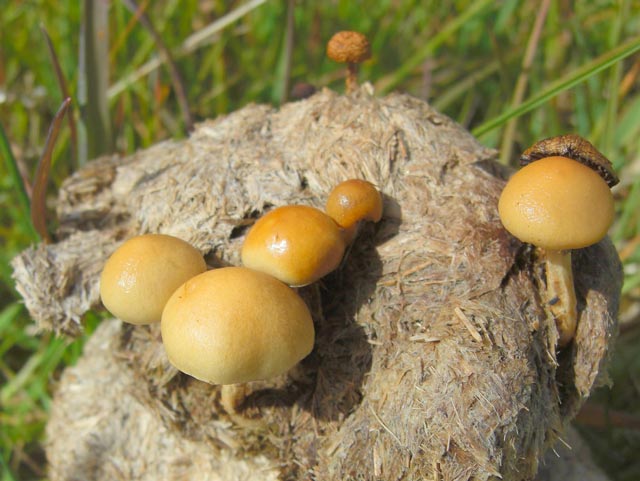
Indeed, one theory of ‘the missing link’ in human evolution proposes that hallucinogenic mushrooms may have caused such an explosion of consciousness that evolution then proceeded too fast to leave any sequential trail in the fossil record. This could mean that psychedelics made us human and are innate and intrinsic to humanity.
Allegra claims that these molecules induced the original intimations of the divine.
From paintings on vases, modern scholars deduce that the Eleusinian Mysteries were hallucinatory, imparting knowledge so profound that they needed no repetition. Those entheogens were intended to,
raise humanity above the human sphere into the divine and to assure redemption by making humans into gods, so conferring their immortality
Evolving further since the third millennium BCE, entheogen use spanned the Bronze Age (3300–1200 BCE) the early Iron Age (c. 1200 BCE), and the Homeric hero cult. Centuries later, they led to the Imperial cult of Rome with worship of the ruler.
Homer’s frequent repetition of, ‘mixing the mellow wine’ does not always make clear that they routinely spiked their wine with psychedelics. To quote Homer,
Then they made all fast throughout the ship, filled the mixing bowls to the brim, a god-like drink!
Elsewhere, however, Homer is explicit:
Helen mixed the wine to take all tears away. She added potent drugs.
She drugged the wine with an herb that banishes all care, sorrow and ill humour.
Whoever drinks wine thus drugged cannot shed a single tear …
This drug of such sovereign power and virtue had been given to Helen
by Polydamna, wife of Thon, a woman of Egypt, where there grow all sorts of herbs.
When Helen had put this drug in the bowl, she told the servants to serve the wine …
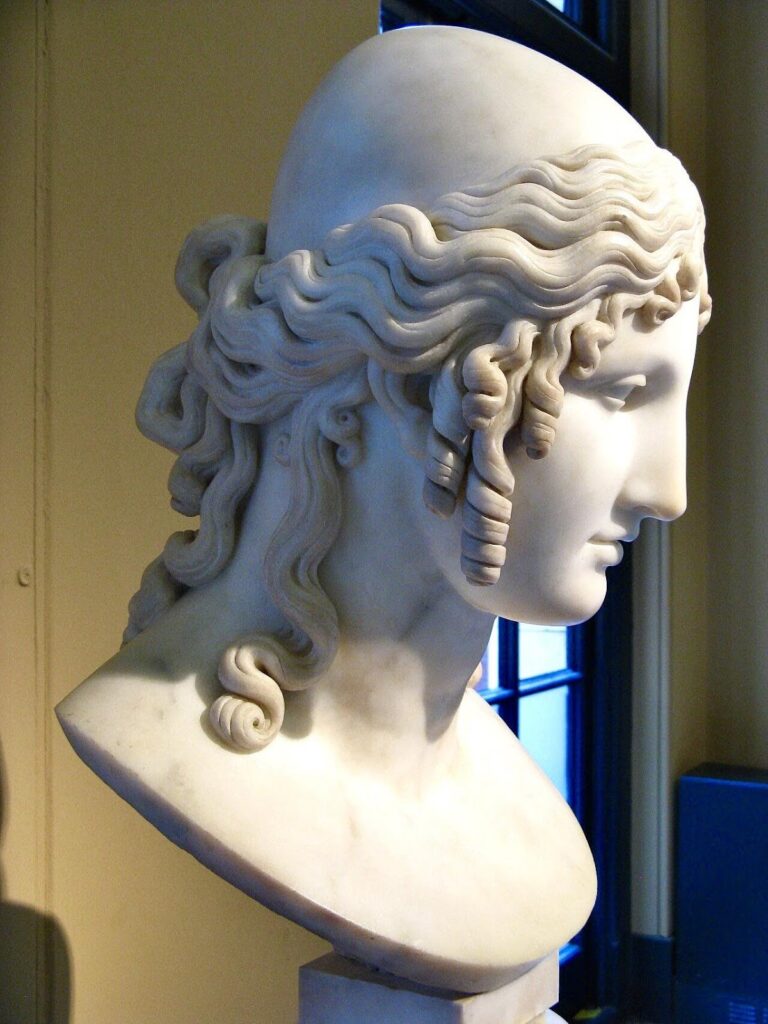
The Eleusinian festival centred on the mythology of Demeter, meaning the mother. Demeter was goddess of the harvest and of abundance in grain. The festival centred more particularly on her daughter, Persephone, also known as Kore, the maiden, who for Dionysus, god of intoxication, was painting all the flowers on earth. Her subjects included the flower called Narcissus, whose name derives from narkissos or narke, Greek for numbness, or the narcotic effects of the Narcissus plant. Narcissus is the genus of all species of daffodils, all rich in alkaloids.
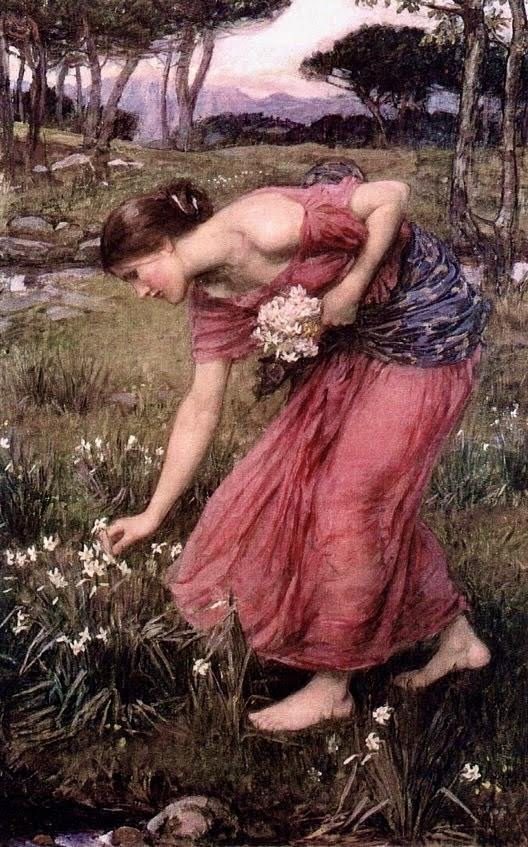
When Persephone picked this narcotic, Hades, god of death and the underworld, erupted from the earth, seized Persephone, abducted her, raped her, and took her down into the underworld to become his wife, his queen, and the mother of their child, Pluto, meaning wealth.
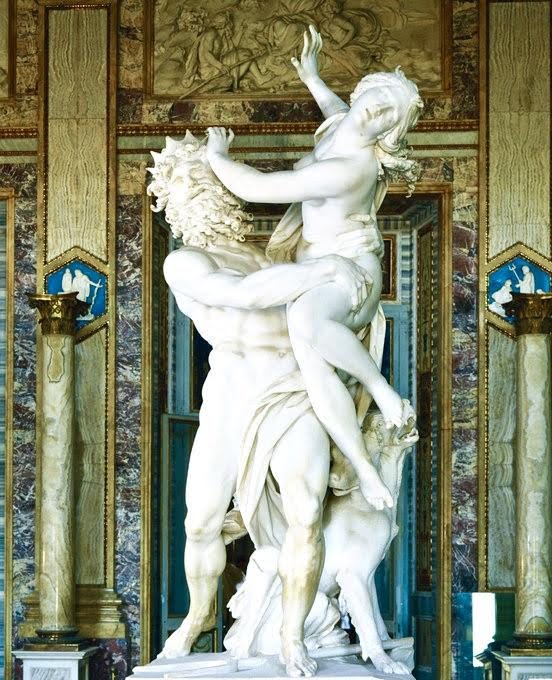
With the fluidity of Greek mythology, the identity of Persephone’s abductor, Hades, god of death and the Underworld, merged with Dionysus, god of intoxication – by any inebriant. Hades is sometimes regarded as equivalent to a psychedelic experience.
Indeed, the classics scholar, CAP Ruck, says that Plato, drawing on a myth of the Eleusinian priesthood, rationalised Persephone’s abductor as neither Hades, nor as Dionysus, but as esoteric code for the nymph of a poisonous well, called Pharmacia, meaning ‘the use of drugs.’
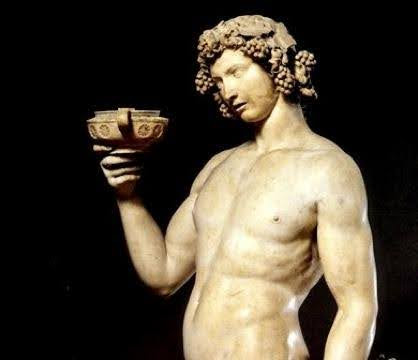
Ruck says, ‘There can be no doubt that Persephone’s abduction was a drug-induced seizure.’ Those agrarian religions, exalting female procreativity, cyclical rebirth, and a sacred marriage, brought the people together to share psychedelic potions. Ruck says the ancients wrote more about drugs than on any other subject. He complains
that despite what is known about the agrarian religions of the area before about 4000 BCE, classicists today ignore these facts.
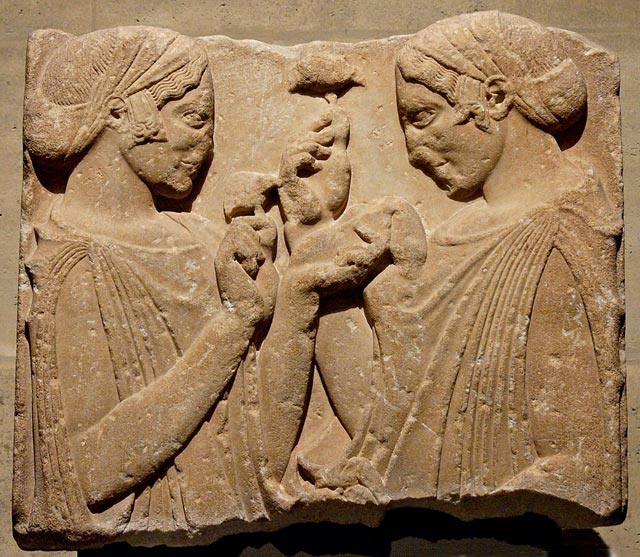
Persephone’s mother, golden-haired Demeter, grieved over the loss of her daughter, causing such a drought that the crops failed, people starved and made no sacrifices to the Olympian gods, who complained to Zeus. Zeus sent Hermes, messenger of the gods (Mercury in Roman times) to negotiate with Hades.
Anyone who eats or drinks anything while in the underworld is doomed to eternity there, and Hades had tricked Persephone into eating four pomegranate seeds, in other versions of the myth, six.
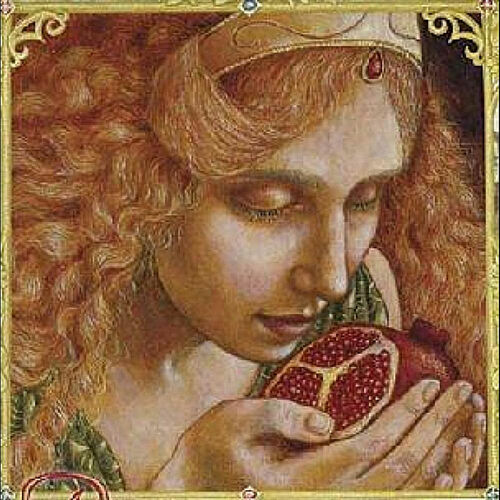
By a compromise, Persephone returns to Hades for four (or six) months each year, during which Demeter grieves and neglects agriculture for the long cold dark winter months. Persephone’s returns to this world became each successive spring.\
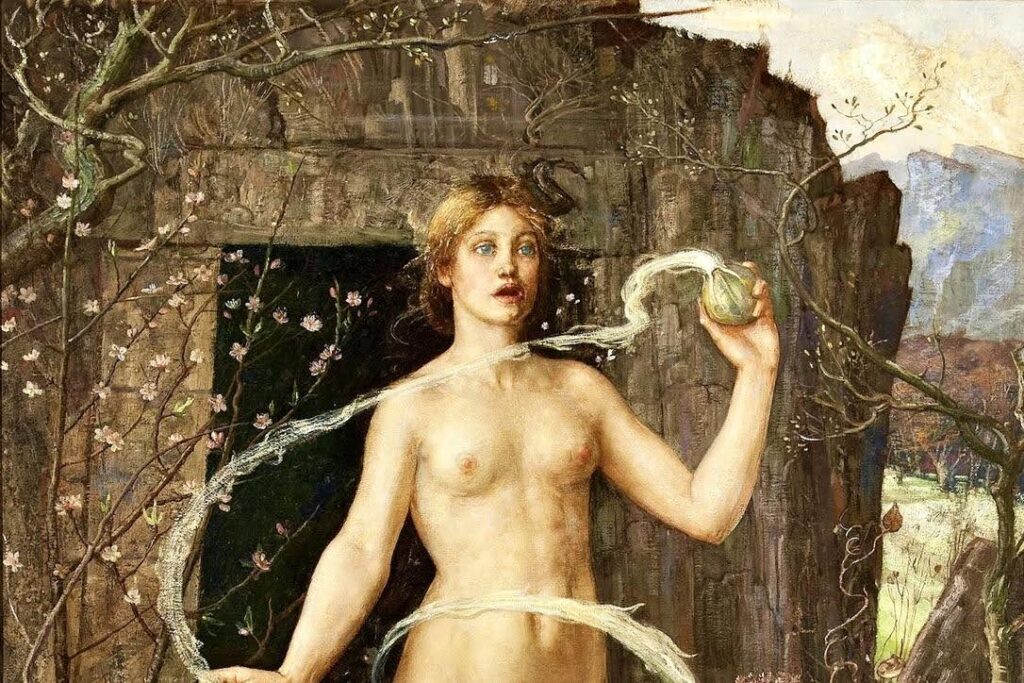
The Eleusinian Mysteries were celebrated over nine days, with a procession, beginning at the ancient cemetery of Athens at Eleusis, bringing the sacred edible objects nineteen kilometres from Eleusis to the Eleusinion at the base of the Acropolis at Athens. The next day, priests offered sacrifices, and the day after that, the people performed cleansing rituals, washing themselves in the sea.
The next day, celebrants processed from Athens back to Eleusis along the Sacred Way, still open today, albeit through dreary industrial suburbs. In ancient days, pilgrims crossed a narrow bridge, not wide enough for vehicles, symbolising crossing into another world, Persephone’s Underworld; a world in which Hades, or Dionysius, or Pharmacia, or a mind-enhancing potion, had abducted Persephone.
On arrival at Eleusis, before passing through the fortifications into the most sacred and the most secret part of the Mysteries, not to be divulged, thousands danced late into the night beside the well, where golden-haired Demeter had mourned her daughter. Then they entered the sanctuary whose gates and walls protected the Mystery of Eleusis.

Once within the great hall, or telesterion, there followed a day of fasting, commemorating Demeter’s fast while grieving and searching for her daughter, Persephone.
The great hall of the telesterion represented the nether world into which Hades had abducted Persephone. Its construction began in about 1500 BCE. It was burnt down in 170 CE. In 379 CE Theodosius I (347–395) who made Christianity the official state religion of the Roman Empire, finally ordered it closed. In 395 CE, Christians destroyed any remains. Nonetheless, archaeology allows an informed reconstruction of the building.
It was a grand public stadium seating tens of thousands for the event. It gives no indication of any theatrical use; rather, they constructed a free-standing inner room over the site of the original temple. Inside that inner sanctum, with elaborate ritual and pageantry, hereditary officiants prepared the sacred psychedelic potion called kykeon.
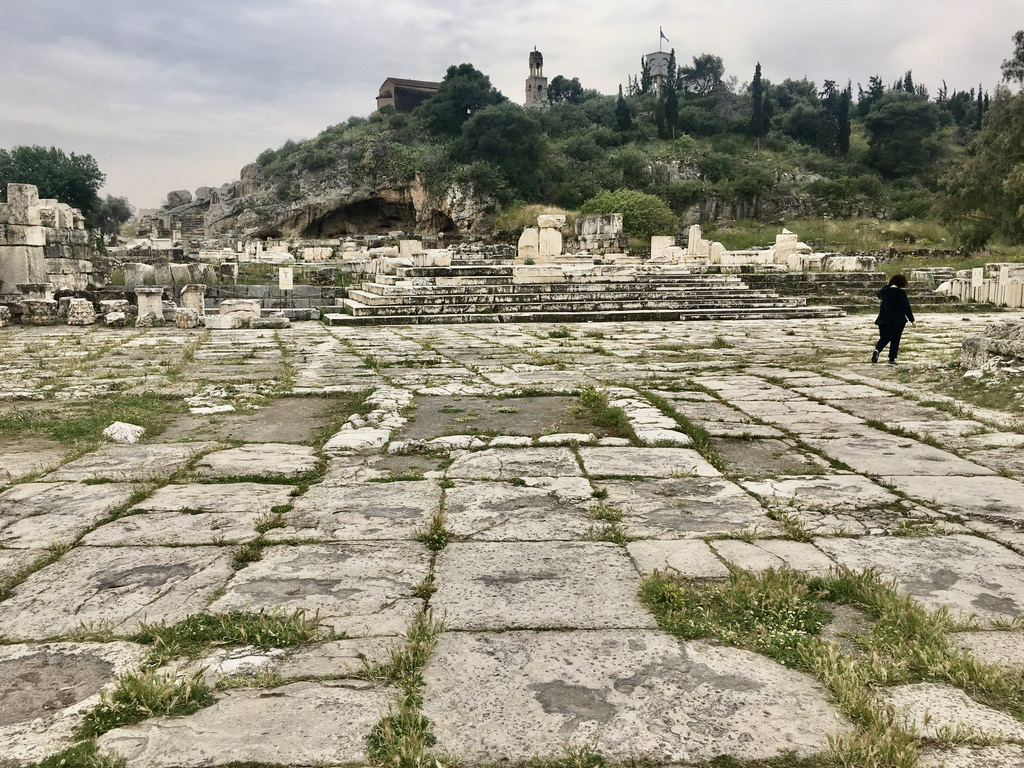
Balancing two-handled, lidded, silver chalices on their heads, dancing priestesses, administered the sacred potion, which produced a gradual dissolution of the ego, with gradual entry into ecstasy, accompanied by fear and trembling, vertigo, nausea, cold sweats, and mystical visions, including an aura of brilliant light. According to Ruck,
a sense of awe and wonder emanated, at a brilliance which caused profound silence, since what had just been seen and felt, could never be communicated with words. . . . encounters with the divine, provoking terror and ecstasy, darkness and light . . . and the division between earth and the sky melting into a pillar of light. . . . the spirit of Persephone herself, up from Hades, carrying her new-born son [Pluto], conceived [to Hades] in the Underworld
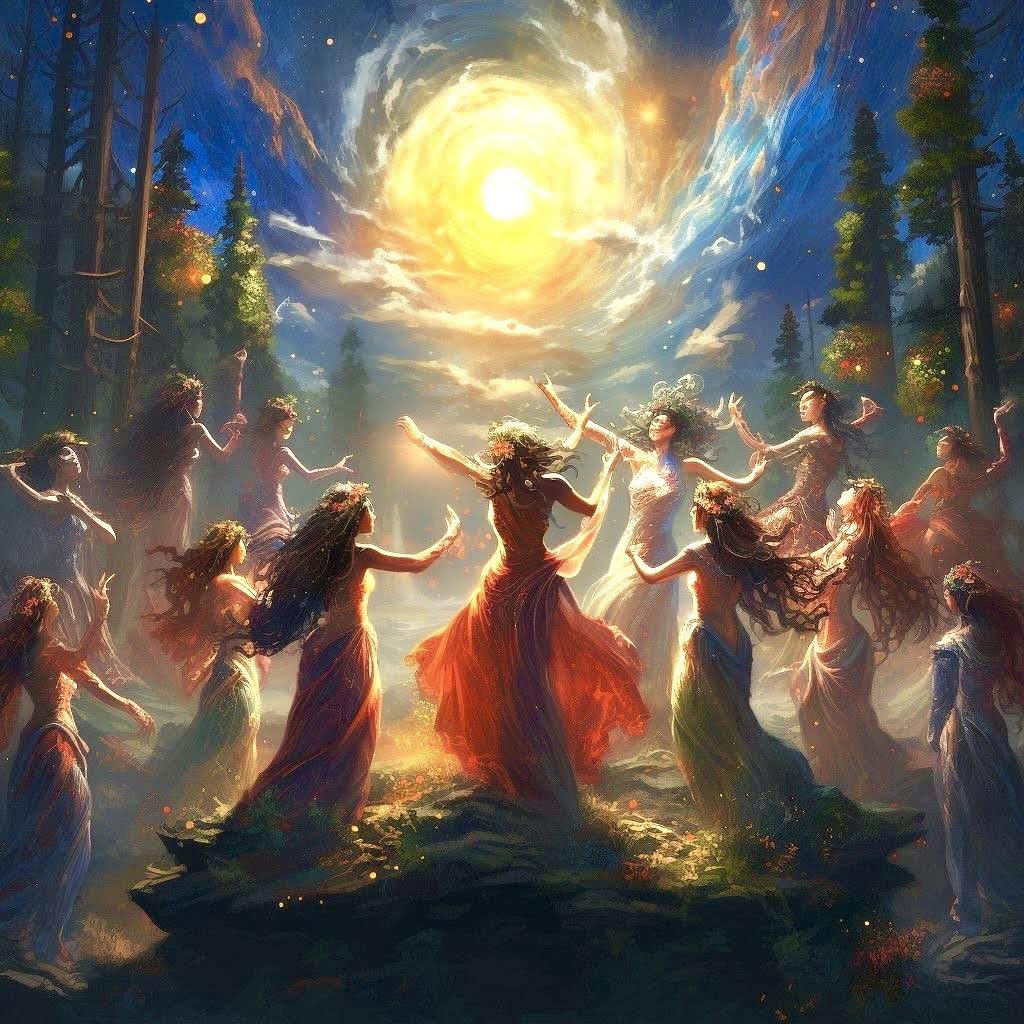

Ruck asserts that, ‘the secret of Eleusis was rebirth from death,’ signified also by an ear of barley reverently sown in the adjacent Rarian plain, to be harvested as an ingredient of the potion to be drunk by initiates into the Mystery the following year. Just as Hades carried away Persephone, to give birth to his son, Pluto, so was grain sown into the field and buried in the earth to bring forth new life.
Originally, these were tribal initiations into shamanic communion with ancestors, with the current generation, and with future members of the community. Initiates became full members of the tribal community by participating in the Mysteries.
In about 600 BCE, when Athens annexed Eleusis into Athenian territory, the use of psychedelics for initiation into tribal community lost its secular application. It became a religious ceremony conferring civic status. The Eleusinian Mysteries initiated every Athenian, and were soon open to all Greeks.
For many participants, the festivals were an opportunity for having a good time, in good company, with good food, with alcoholic and psychedelic intoxication and sometimes, within the Dionysian cult, with sexual pleasures.

by Henryk Siemiradzkt, 1889
Others came for the religious experience, which conveyed its meaning without words or any theology, creed or doctrine. Apart from the oath of secrecy, therefore, it was not possible to disclose the mystery to the uninitiated. It was above words. The essence of both Eleusinian and Dionysian Mysteries was not expressible in voice or writing, but only subjectively and experientially in the festivals themselves. McKenna explains that the power of the Mysteries lay in their foregoing dogma in favour of direct religious experience. It was treachery to reveal the secret dances.

Imagine having such transcendental experiences in the consensual reality of the whole community of thousands! As Aldous Huxley wrote, practitioners of psychedelics use the drug not merely as a short cut to the visionary world, but also as an instrument for creating a loving solidarity within the group. What an engine of holistic integration, of community solidarity, and of creativity, that must have been, and yet to many academics the so-called ‘miracle’ of Greek culture remains unexplained.
As Lent explains, these agrarian rites have a common origin from nomadic pastoral Proto-Indo-European shamanic practices. Who knows how much further back these traditions go into their pre-history, in darkest Africa?
Those who experienced the Mystery at Eleusis became gentler and lived more joyfully following the sublime experience during the intoxication. The Mystery became a rite of passage for many, including Socrates, Euripides and Sophocles. Comparable experiences with entheogens throughout history, in both ancient and modern times, and in varying cultures and geographic locations, suggest that these sacred and transformative experiences might be the true foundation of religion and of humanity’s relationship with the divine, not to mention human’s deeper relationship with themselves.
The Eleusinian Mysteries admitted men, women and slaves, and according to Plato himself,
the ultimate design of the Mysteries . . . was to lead us back to the principles from which we descended
Ingestion of the holy kykeon was enjoyable, revealing, and much sought after, as Cicero and many initiates wrote. Entheogenic signifies such experiences. Texts surviving the Eleusinian Mysteries indicate experiences comparable with other ancient entheogenic experiences around the world, such as Ayahuasca in the Amazon, the Blue Water Lily in Egypt and the Soma in India.
The Eleusinian Mysteries became a major harvest festival, each September, to which thousands, including the highest levels of society, flocked from all around the known world, for two-thousand years. Ruck notes the annual pilgrimage to Eleusis was the most important thing in the world for the citizens of ancient Greece. According to Aristides, all considered Eleusis as the common temple of the world. Its architecture was magnificent. It was huge, capable of holding as many people as the largest amphitheatre.
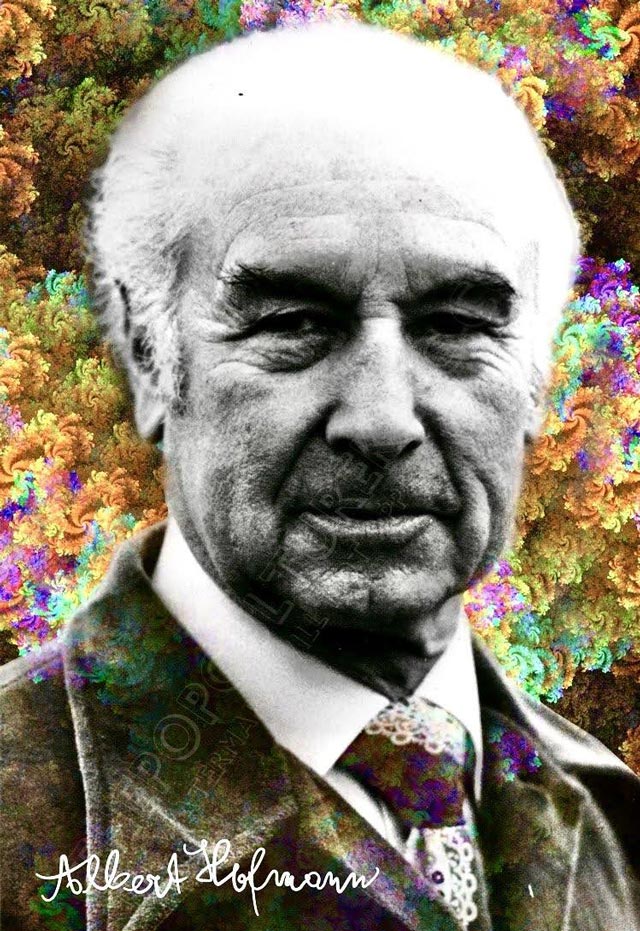
Some scholars today believe that the kykeon contained hallucinogenic mushrooms, but in 1994, Hoffman, first to synthesise LSD25 said that the psychoactive ingredient was not mushrooms, but ergot, a mould growing on wheat, which the ancient Greeks had learnt to make safer by using a solution in water, which separated the water-soluble alkaloids from the more dangerous peptides.
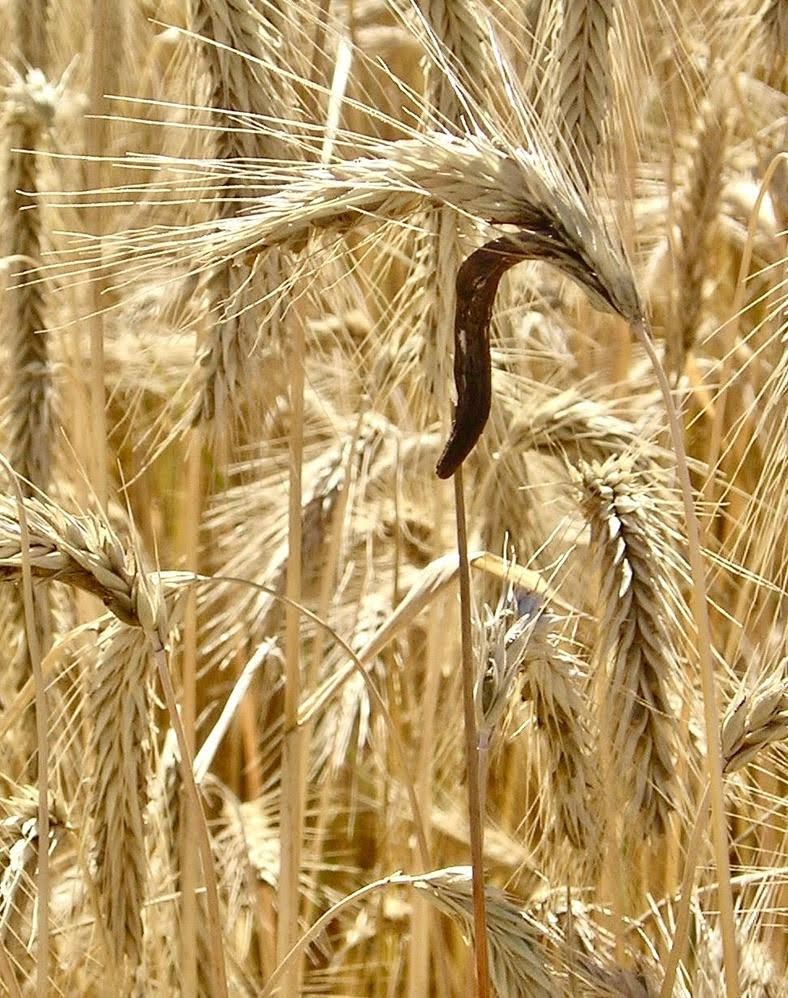
Ruck says that the recipe for the potion is in the Homeric Hymn to Demeter and corresponds exactly with the Vedic Soma of India. Since ergot causes nausea, the Homeric Hymn to Demeter mentions that they added both barley and mint to settle the stomach. Mixed and distributed by women the potion also included milk emblematic of the female. The hymn declares, ‘blissful is he among men on Earth who has beheld that! [the ecstatic vision].’ Both Pindar and Cicero, who partook of the potion, concur:
For among the many excellent and indeed divine institutions which your Athens has brought forth and contributed to human life, [wrote Cicero] none in my opinion is better than those Mysteries. For by their means, we have been brought out of our barbarous and savage mode of life and educated and refined to a state of civilization; and as the rites are called “initiations,” so in very truth we have learned from them the beginnings of life, and have gained the power not only to live happily, but also to die with a better hope
Each year in Plato’s Athens there were one-hundred other, albeit lesser, entheogenic festivals, averaging two per week, plus total acceptance of any drugs or alcohol anywhere, anytime. So, Plato’s Athens was a great drug fest.
There is plenty of evidence that entheogen use continued in Christian practice well into the Middle Ages: simply google ‘images of psychedelics in Christianity’ to see many examples. One striking example is an illumination in the twelfth-century, ‘Canterbury Great Psalter’ of Jesus offering mushrooms.
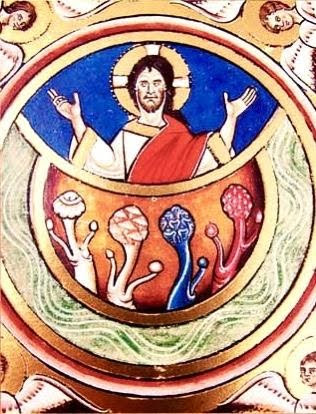
The Psychedelic Gospels: The Secret History of Hallucinogens in Christianity
Modern research over the last decade at Johns Hopkins University in Baltimore, at Imperial College London, and at St Vincent’s Hospital in Melbourne, including monitoring brain function conclude that psilocybin is a safe and effective drug, activating the neurotransmitter serotonin (5-OH-tryptamine, or 5-HT), occurring naturally in the brain. Professor David Nutt of Imperial College, asserts that, ‘the ban on medical research into psychedelics is the worst censorship of medical research in the history of the world.’

Psychedelics led to, and enabled, modern brain research, which has revealed the Default Mode Network, an extensive brain network which maintains mental equilibrium or homeostasis of the inner psychological climate. It maintains the sense of the ego, the boundary between the conscious and unconscious, and the boundary between self and other. Temporary and reversible impairment of the Default Mode Network, dissolves the ego, dissolves the boundary between self and other, between the conscious and the subconscious, opening the subject’s awareness to cosmic feelings of universality merging and love.
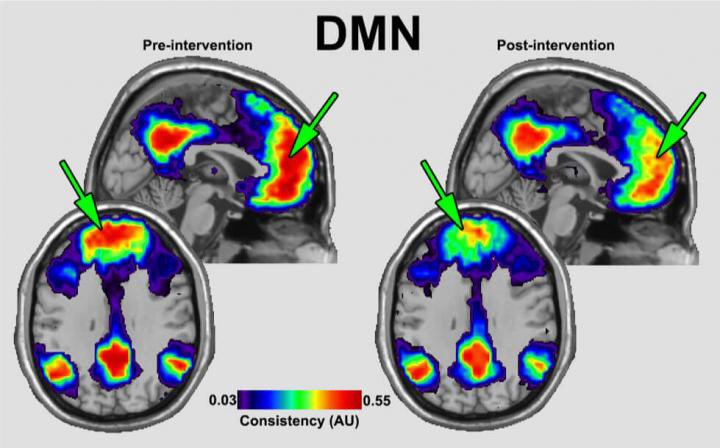
In The Tempest, Shakespeare draws on the Eleusinian Mysteries for the central theme of the masque that Prospero conjured for the marriage of Miranda and Ferdinand. CG Jung (1875–1961) referred often to the Eleusinian Mysteries in his reframing of psychoanalysis as spiritual rebirth.
Others wrote about the revelatory and joyful experience while under the influence of the drug. For example, The Beatles’ Paul McCartney said that on DMT (Dimethyltryptamine which also occurs naturally in the pineal gland) he
saw God, this amazing towering thing . . . It was huge. . . . We felt we had seen a higher thing. . . . I felt humbled

HRH Prince Harry says publicly that ‘psychedelics play an important role in my life’.

Throughout history and prehistory, entheogen use is far more the norm than the exception. An exception is our present benighted prohibition.
Why, then, have psychedelics been banned, and their possession or use made criminal?
Beginning in 1343 with the Black Death, superstitious authorities blamed witchcraft and plant knowledge, including ergot on wheat and psylocibin mushrooms. Witch-hunts and burning at the stake peaked.

Since then, aspiring academics have dodged such contentious issues, so entheogens were edited out of history, philosophy, and religion, centuries before President Nixon’s politically motivated ‘War on Drugs’.
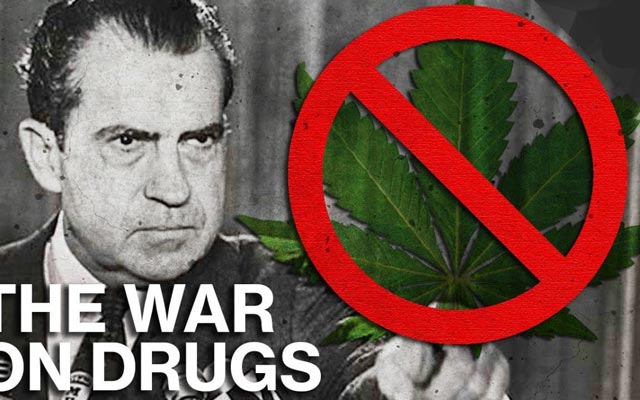
Ruling elites are conservative, discouraging challenge to the status quo of their rule. What they fear and oppose most, however, is a change of consciousness in those they rule. But, for our very survival, change of mass consciousness is desperately needed.
McKenna observes that where hallucinogens are not used, cultural innovation occurs very slowly, if at all, as in oligarchic, militaristic Sparta. Where hallucinogens do occur, however, as in ancient Athens, favouring individual freedom, democracy, and progress, a culture is frequently introduced to ever more novel ideas.
Despite current criminalisation of psychedelics, the young today are taking the initiative, and taking the matter into their own hands, doing entheogens in secret, dancing together in forests, in large dance parties or doofs, resembling the Mysteries of ancient Athens.

In our emerging ecological crisis, the Deep Ecology Movement regards psychedelics as a means of reconnecting with nature, not through thought, or words, but by identifying with nature and ecology in bodily experience. Plant entheogens are Nature’s healing for human ecocide. Michael Pollan, professor of journalism at UC Berkley encourages this in his 2018 book, How to Change Your Mind: The New Science of Psychedelics, 2018
Additional Reading
- Adam, James, The Religious Teachers of Greece, 1965
- Allegra, John M, The Sacred Mushroom and the Cross, 1970
- Angus, Samuel, The Mystery-Religions – A Study in the Religious Background of Early Christianity, 1925
- Ardrey, Robert, African Genesis, 1961,
- Ardrey, Robert, The Territorial Imperative, 1966
- Aristotle, De Anima, Nicomachean Ethics, Metaphysics
- Benn AW, The Greek Philosophers, 1882
- Boon, Marcus ‘The Road of Excess – A History of Writers on Drugs’, 2002, Harvard, ISBN: 0-674-00914-2.
- Brown Jerry and Julie The Psychedelic Gospels: The Secret History of Hallucinogens in Christianity, 2016
- Bury, JB, A History of Greece to the Death of Alexander the Great, 1910
- Capra, Fritjof, The Turning Point: Science, Society and The Rising Culture, 1982
- Carney, Judith A, African Traditional Plant Knowledge, 2003
- Cicero, On Living and Dying Well
- Collins, WL, Cicero
- Dante, Divine Comedy, 1320
- Darwin, Charles ‘A Theory of the Evolution of Species by Means of Natural Selection’ 1859
- Davis, Michael, The Soul of the Greeks, 2011
- Deleuze, Giles and Gauttari, Felix, The Three Ecologies, 2008
- Dennett, Daniel C, Consciousness Explained, 1991
- Diamond, Jared, Collapse:How Societies Choose to Fail or Succeed, 2005
- Diamond, Jared, Guns Germs and Steel.
- Freud, S, Interpretation of Dreams, 1899
- Freud, S, On Narcissism 1911
- Freud, S, The Future of an Illusion, 1927
- Gibbon, Edward, The History of the Decline and Fall of the Roman Empire, 1776-1789
- Guhl, E and Koner, W, The Greeks: Their Life and Customs,1994
- Hall, Edith, Introducing the Ancient Greeks: From Bronze Age Seafarers to Navigators of the Western Mind, 2015
- Hari, Johann, Chasing the Scream – The First and Last Days of the War on Drugs, 2015
- Harpur, Tom, The Pagan Christ, 2004
- Harrison, Juliette, The Classical Greek Practice of Incubation and Some Near Eastern Predecessors, 1908
- Hattori, Shiho, 2006, Utilization of Marantacea Plants by the Baka Hunter-Gatherers in South-eastern Cameroon, 2017
- Hillman, DCA, The Chemical Muse: Drug Use and the Roots of Western Civilization, 2004
- Homer, Iliad, Odyssey, Hymn to Demeter
- Huxley, Aldous, The Doors of Perception, 1954
- James, William, The Varieties of Religious Experience: A Study in Human Nature, 1901
- Jowett, Benjamin, Plato, 1881
- Jung, CG, Modern Man in Search of a Soul, 1933
- Kuhn, Alvin Boyd, Shadow of the Third Century: A Revelation of Christianity, 1949
- Marcuse, Herbert, One Dimensional Man, 1964
- McGilchrist, Iain, The Master and his Emissary – The Divided Brain and the Making of the Western World, 2009
- McKenna, T. Food of the Gods: The search for the Original tree of Knowledge,1992
- Mitford, William, The History of Greece, 1784
- Murray, Gilbert, Five Stages of Greek Religion, 1912
- Onians, RB, ‘The Origins of European Thought’ about the Body, the Mind, the Soul, the World, Time, and Fate’, 1951
- Persig, Robert, Zen and the Art of Motorcycle Maintenance: An Enquiry into Values 1974
- Plato, Apology, Phaedrus, Parmenides, Phaedo, Republic, Symposium, Theaetetus, Timeus,
- Pollan, Michael, The Omnivore’s Dilemma, 2007
- Pollan, Michael, How to Change Your Mind: The New Science of Psychedelics, 2018
- Reich, Wilhelm, Character Analysis, 1933, The Mass Psychology of Fascism 1933
- Russell, Bertrand, “The History of Western Philosophy and its Connection with Political and Social Circumstances from the Earliest Times to the Present Day, 1945
- Taylor, AE, Plato: The Man and His Work, 1926
- Temple, William, Readings in St John’s Gospel, 1952
- Trollope, A, Life of Cicero, 1880
- Wade, Nicholas, The Faith Instinct – How Religion Evolved and Why it Endures, 2009.
- Wasson, RG; Hofmann, Albert; Ruck, CAP, The Road to Eleusis: Unveiling the Secrets of the Mysteries. 1976
- Weber, Max, The Protestant Ethic and the Spirit of Capitalism, 1905
- Weil, Andrew, The Natural Mind, 1998





